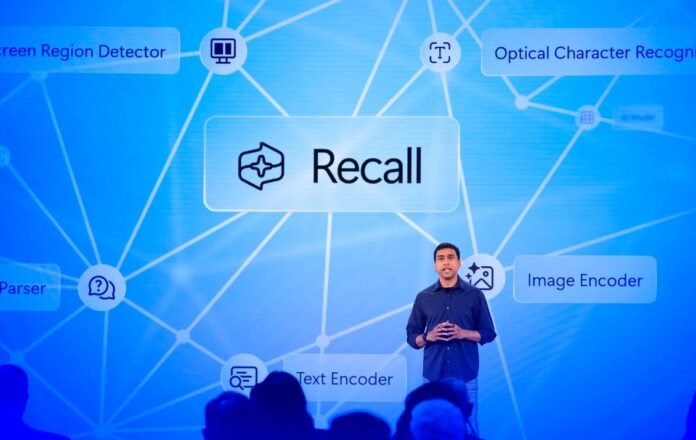Microsoft’s Recall AI tool, once hailed as a groundbreaking feature for its Copilot+ PCs, has resurfaced after a year-long hiatus, now with enhanced privacy measures. Initially, Recall faced significant backlash due to its invasive nature, capturing frequent screenshots of user activity without clear consent. The tool’s ability to record sensitive information, such as credit card numbers and Social Security details, raised alarms among privacy advocates and security experts .
The Recall Tool: A Digital Photographic Memory
Recall was designed to function as a digital “photographic memory,” automatically taking screenshots every few seconds to allow users to search and retrieve past activities on their Windows PCs. This ambitious feature aimed to enhance productivity by enabling users to revisit previously viewed content effortlessly. However, the tool’s underlying mechanism of continuous data capture and storage without explicit user consent led to concerns about privacy violations and potential misuse.
Privacy Concerns and Initial Backlash
The initial rollout of Recall was met with criticism from various quarters. Privacy advocates labeled it a “privacy nightmare,” highlighting the tool’s propensity to capture sensitive personal information inadvertently. Despite Microsoft’s assurances that data would be stored locally and encrypted, the lack of user control over what was being recorded and the absence of redaction for sensitive data fueled skepticism .
Microsoft’s Response: A Privacy-Focused Overhaul
In response to the backlash, Microsoft has undertaken a comprehensive redesign of the Recall feature, emphasizing user control and data security. The tool is now opt-in, requiring users to actively enable it rather than being enabled by default. Additionally, Microsoft has implemented several privacy safeguards:
- Enhanced Encryption: All screenshots and associated data are now encrypted and stored in a secure enclave, inaccessible even to system administrators.
- Proof-of-Presence Authentication: Access to Recall’s data requires biometric verification through Windows Hello, ensuring that only authorized users can view or manage their captured information.
- Data Minimization: Recall now includes filters to exclude sensitive information, such as passwords and financial details, from being captured.
- User Control: Users can delete specific entries, clear data from particular applications or websites, or remove all stored information entirely.
These changes aim to address the privacy concerns that initially plagued Recall, offering users greater transparency and control over their data .
The Road Ahead: Will Users Embrace Recall?
Despite the enhancements, skepticism remains. Privacy experts caution that no system is foolproof, and the potential for inadvertent data capture still exists. Moreover, the tool’s inherent nature of continuous monitoring may deter users who value their digital privacy.
As Microsoft continues to roll out the updated Recall feature to Windows Insiders, the true test will be user adoption and trust. Will the promise of enhanced productivity outweigh the concerns over privacy? Only time will tell whether Recall becomes a valuable tool in the Windows ecosystem or a cautionary tale of overreach in the pursuit of technological advancement.
In conclusion, Microsoft’s Recall AI tool represents a significant shift in how personal data is handled by operating systems. While the privacy-focused redesign is a step in the right direction, it underscores the delicate balance between innovation and user trust. As technology continues to evolve, so too must the frameworks that protect individual privacy, ensuring that progress does not come at the expense of personal freedom.




